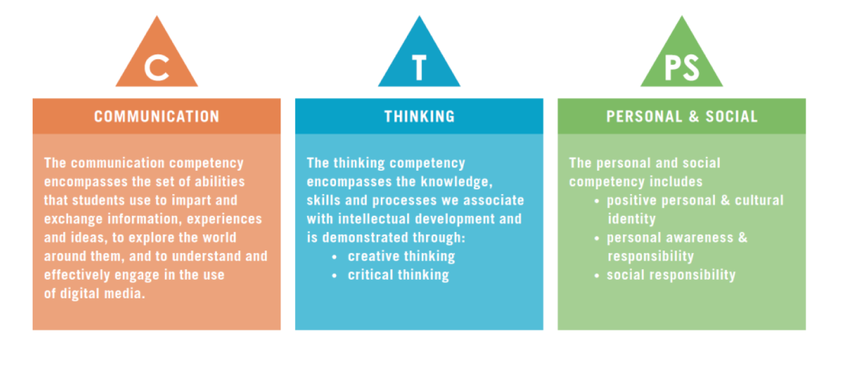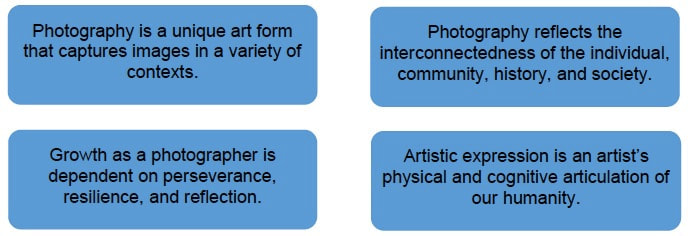As members of Surrey Schools, we would like to humbly acknowledge that we live, work, play and engage in the act of education on the stolen, unceded and traditional shared territories of the hən̓q̓əmin̓əm̓-speaking q̓əc̓iy̓ (Katzie) and q̓wa:n̓ƛ̕ən̓ (Kwantlen) Coast Salish peoples and the North Straits Salish-speaking Semiahmoo Coast Salish peoples.
Indigenous Perspectives: Indigenous knowledge and perspectives are an important part of the historical foundation of both BC and Canada and are integrated into every subject in our curriculum. All students will have opportunities to better understand and respect a variety of cultures, both their own and others.
Indigenous Perspectives: Indigenous knowledge and perspectives are an important part of the historical foundation of both BC and Canada and are integrated into every subject in our curriculum. All students will have opportunities to better understand and respect a variety of cultures, both their own and others.
ASSIGNMENTS AND PROJECTS
COURSE OUTLINE
DESCRIPTION:
This Visual Arts course is designed to help you build a foundation in visual literacy skills and knowledge as it pertains to photography. The principle goal of this course is to have you grasp the technical, aesthetic and semantic aspects of photography and digital image making as it applies to fine arts and design. Emphasis is on enhancing your visual awareness of the world around you, creating personal imagery and responding critically to your work, the work of your peers and the work of professional photographers and artists.
CORE COMPENTENCIES:
COURSE BIG IDEAS:
COURSE CONTENT:
Students are expected to be able to do the following ("I" Statements)
Reason and Reflect
Connect and Expand
Explore and Create
Communicate and Document
Reason and Reflect
- I can understand the purpose of critiques and feedback. I can accept constructive feedback and use it to make changes that improve my work.
- I can ask questions about and describe how artists and their peers use materials, technologies and techniques in their art making. I can do this using art terms/language.
- I can ask questions about and try to understand why artists make certain choices in their works.
- I can come up with thoughtful answers/responses to questions about art, why it is important, and what makes it valuable.
- I can reflect on the way that personal, social, cultural, environmental, and historical issues impact artistic works.
Connect and Expand
- Create works of art that convey their personality and world views.
- Think about Indigenous perspectives, customs, and ways of understanding the world and their place in it.
- Explore possible careers in visual arts. Understand the different opportunities there are for them to study or work in visual arts after high school.
- Use art to connect with people from other schools, cities, or countries.
Explore and Create
- I can create art by using my senses (what I see, what I hear, what I smell, what I feel), my imagination, and inquiry (inspired by questions I have).
- I can learn by experimenting and thinking creatively using lots of different materials, techniques, and technologies.
- I can put thought into the materials, techniques and technologies that I choose to use so that I am able to create art that clearly shows my ideas.
- I can learn from taking risks and making mistakes.
- I can improve my technique as an artist by learning about different styles of art and practicing them.
- I can put thought into my creations and when I come to a challenge or road block, I can use it as an opportunity to be creative and try something different.
- I can understand the importance of the history of art and the works created by famous artists. I can make connections between what was happening in the world at the time that certain styles were created and subject matters were explored.
- I can understand, apply, and demonstrate the elements of art and the principles of design.
Communicate and Document
- I can photograph, post, and talk about/write about my work. I can reflect on the way that personal, social, cultural, environmental, and historical issues impact my artistic works.
- I can use art to show that I understand who I am, where I come from, and how I fit in to the world.
- I can share ideas and express feelings through the art that I create.
- I can use art to comment on things that are happening in society and the world.
CURRICULAR COMPETENCIES:
Students are expected to be able to do the following:
Explore and create
• Create photographic works using sensory inspiration, imagination, and inquiry
• Explore photographic possibilities and cross-cultural perspectives
• Take creative risks to express meaning, intent, and emotion through photography
• Intentionally select and combine materials, processes, and image-making technologies to convey ideas
• Create photographic images for a specific audience
• Develop and refine photographic skills and techniques related to a range of styles and genres
• Demonstrate active engagement in creating photographic images and resolving creative challenges
Reason and reflect
• Understand the purpose of a critique and choose when to apply suggestions
• Describe and analyze, using discipline-specific language, how photographers use materials, technologies, processes, and environments in art making
• Analyze design choices in photography
• Develop personal answers to aesthetic questions
Communicate and document
• Document, share, and appreciate photographic images
• Demonstrate awareness of self, others, and place through photography
• Communicate about and respond to social and environmental issues through photography
Connect and expand
• Create photographs that reflect personal, cultural, social, environmental, and historical contexts
• Explore First Peoples perspectives, knowledge, and protocols; other ways of knowing, and local cultural knowledge through photography
• Explore personal, educational, and professional opportunities in photography and related fields
• Explore the reciprocal relationships between photography, culture, and society
• Engage in digital citizenship throughout the photographic process
• Connect with others on a local, regional, and national scale through photography
• Demonstrate safe and responsible use of materials, equipment, and work space
Explore and create
• Create photographic works using sensory inspiration, imagination, and inquiry
• Explore photographic possibilities and cross-cultural perspectives
• Take creative risks to express meaning, intent, and emotion through photography
• Intentionally select and combine materials, processes, and image-making technologies to convey ideas
• Create photographic images for a specific audience
• Develop and refine photographic skills and techniques related to a range of styles and genres
• Demonstrate active engagement in creating photographic images and resolving creative challenges
Reason and reflect
• Understand the purpose of a critique and choose when to apply suggestions
• Describe and analyze, using discipline-specific language, how photographers use materials, technologies, processes, and environments in art making
• Analyze design choices in photography
• Develop personal answers to aesthetic questions
Communicate and document
• Document, share, and appreciate photographic images
• Demonstrate awareness of self, others, and place through photography
• Communicate about and respond to social and environmental issues through photography
Connect and expand
• Create photographs that reflect personal, cultural, social, environmental, and historical contexts
• Explore First Peoples perspectives, knowledge, and protocols; other ways of knowing, and local cultural knowledge through photography
• Explore personal, educational, and professional opportunities in photography and related fields
• Explore the reciprocal relationships between photography, culture, and society
• Engage in digital citizenship throughout the photographic process
• Connect with others on a local, regional, and national scale through photography
• Demonstrate safe and responsible use of materials, equipment, and work space
ASSESSMENT AND EVALUATION:
Students will produce projects and portfolio work in a variety of subject areas. The goal of every assignment is personal and technical growth. Assessment will involve the following methods:
• Teacher evaluation based on project criteria
• Self-assessment based on curricular competency
• Self-assessment based on personal goals and learning
• Peer critique and discussion
• Teacher evaluation based on project criteria
• Self-assessment based on curricular competency
• Self-assessment based on personal goals and learning
• Peer critique and discussion
EQUIPMENT AND SUPPLIES:
Students will be provided cameras, tripods, SD cards and access to lighting equipment for use in class. Any student is welcome to bring their own camera. However, the school cannot take any responsibility for equipment brought from home. Students are expected to treat equipment with care and will be responsible for cameras and other equipment while in class.


